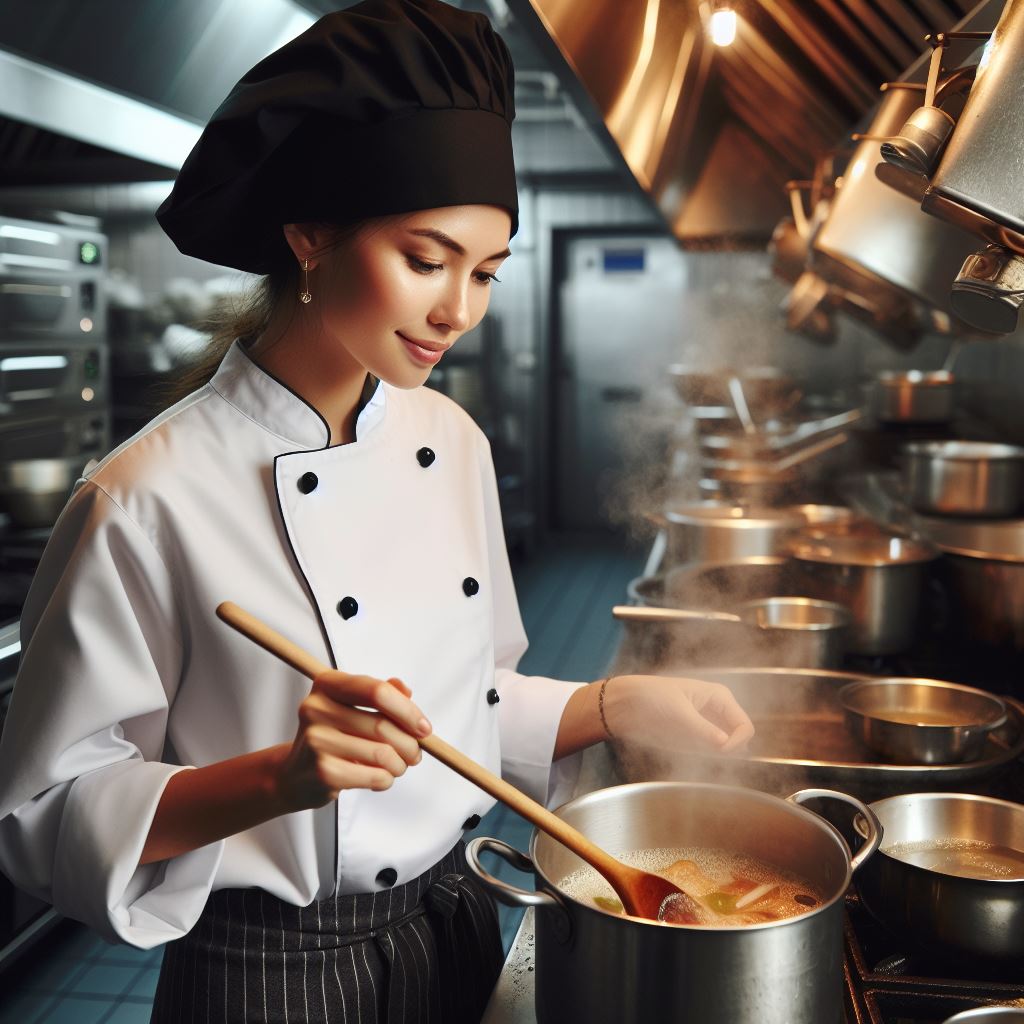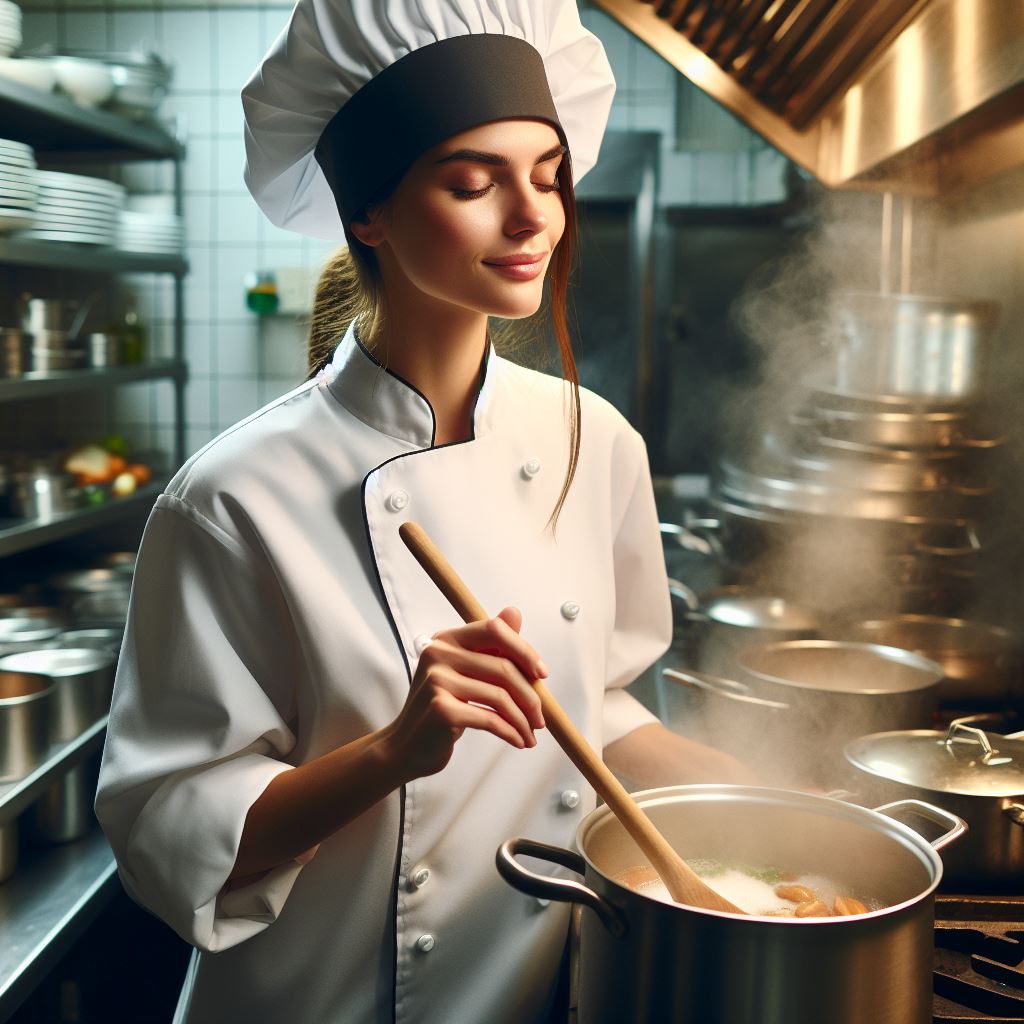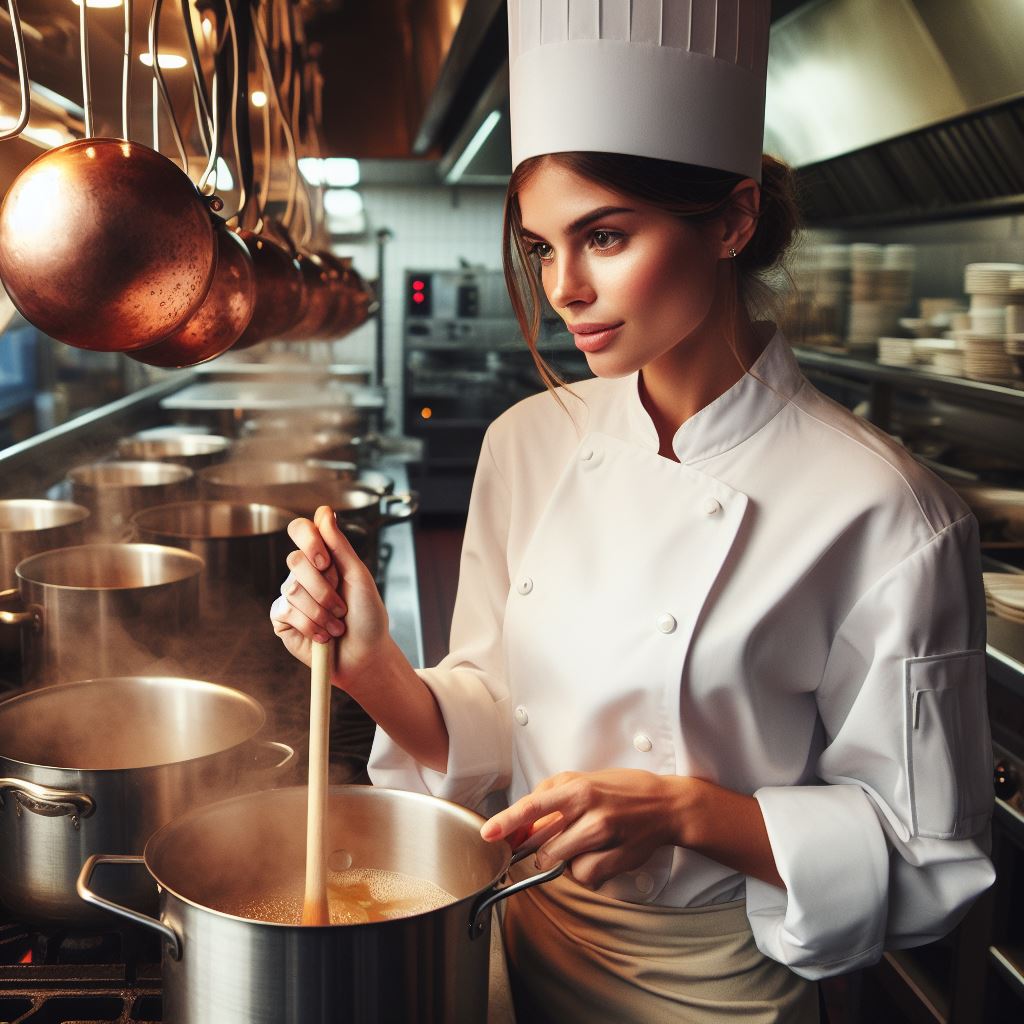Introduction
This post embarks on a comprehensive journey to uncover the intricate nuances of Maori influence within the culinary arts of New Zealand.
Delving into the Maori influence is vital as it reveals the intricate tapestry of cultural heritage interwoven into New Zealand’s culinary narrative.
Understanding this influence allows for a deeper appreciation of the country’s rich cultural mosaic and culinary diversity.
By exploring the roots of Maori cuisine, we gain insight into the indigenous practices, ingredients, and cooking techniques that have shaped New Zealand’s gastronomic identity.
Maori influence transcends culinary exploration, bridging the past with the present, fostering understanding of land and traditions.
Through the lens of food, we can unravel stories of resilience, adaptation, and innovation that have defined Maori culture for centuries.
Moreover, acknowledging and celebrating Maori culinary contributions honors New Zealand’s indigenous heritage, promoting cultural exchange.
Exploring Maori influence in New Zealand’s culinary arts offers more than just gastronomy.
It delves into the nation’s identity, savoring history’s flavors,
Join us as we embark on this culinary odyssey, guided by the spirit of discovery and a deep reverence for the traditions that continue to shape the flavors of Aotearoa.
Maori Cuisine: Traditional and Modern
Overview of traditional Maori cuisine
Maori cuisine is deeply rooted in the traditions and beliefs of the indigenous Maori people of New Zealand.
It reflects their close connection with nature and the importance of sustainability.
Traditional Maori cuisine primarily consisted of foods such as fish, seafood, birds, root vegetables, and ferns.
Key ingredients and cooking techniques
In traditional Maori cuisine, ingredients like kumara (sweet potato), pikopiko (fern shoots), kawakawa (native pepper), and various types of seafood were commonly used.
The cooking techniques involved steaming, boiling, and hangi, a traditional earth oven cooking method.
Personalized Career Consulting
Unlock your potential with expert career advice tailored to your goals. Get personalized guidance and actionable steps toward your dream career in New Zealand.
Get StartedHow traditional Maori cuisine has evolved in contemporary times
With the introduction of European settlers and new ingredients, traditional Maori cuisine has undergone significant changes over time.
The integration of foreign produce, such as potatoes, onions, and pork, into the Maori diet brought about a fusion of flavors and techniques.
Examples of modern Maori-inspired dishes
Today, Maori-inspired dishes have gained popularity in New Zealand’s culinary scene, showcasing a blend of traditional and contemporary elements.
One such dish is the rewena bread, a fermented potato-based bread, which has become a staple at many Maori gatherings.
Another popular dish is the hangi pie, which combines the traditional hangi flavors with a pastry crust.
Additionally, dishes like kumara chips, which are a variation of the popular French fries, have become a common side dish in many restaurants.
The use of native ingredients, such as horopito (native pepper) and kawakawa, in modern dishes adds a unique Maori touch to the flavors.
In recent years, the Maori culinary movement has gained momentum, with a focus on revitalizing traditional cooking techniques and ingredients.
Chefs and cooks across New Zealand are actively incorporating Maori elements into their menus, creating a renewed interest in Maori cuisine.
The revival of traditional Maori cuisine not only celebrates the indigenous culture but also promotes sustainability and a connection to the land.
It allows Maori people to reclaim their food traditions and share them with a wider audience, fostering cultural appreciation and understanding.
In essence, Maori cuisine, both traditional and modern, offers a glimpse into the rich culinary heritage of New Zealand’s indigenous people.
From the ancient cooking techniques to the flavors derived from native ingredients, it is a testament to the deep-rooted connection between the Maori people and their land.
Through the evolution of traditional Maori cuisine, a new wave of Maori-inspired dishes has emerged, creating a vibrant and unique culinary landscape in New Zealand.
Transform Your Career with a Professional CV and Cover Letter
Stand out to employers with an ATS-optimized resume and tailored cover letter designed to match your dream role. Let us craft your job application materials for success!
Get StartedRead: A Day in the Life of a Kiwi Executive Chef
Maori Cultural Significance in Food
The Maori people of New Zealand have a deep-rooted connection between their culture and the food they consume.
Food plays a vital role in Maori society, and it holds significant meaning in various aspects of their lives, including rituals, traditions, ceremonies, and events.
The connection between food and Maori culture
Food is not merely a source of sustenance for the Maori people but is deeply intertwined with their cultural identity.
Traditional Maori foods, known as “kai,” are considered sacred and are prepared with great respect and care.
These traditional foods reflect the history, values, and spirituality of the Maori people.
Rituals and traditions associated with Maori culinary practices
Maori culinary practices are rich in rituals and traditions.
Gathering ingredients for a meal involves careful selection and a strong connection with the natural environment.
Maori hunting, fishing, and gathering practices are not only practical but also carry deep spiritual meaning.
These practices are often passed down through generations, maintaining the cultural significance of their culinary traditions.
Understanding the significance of food in Maori ceremonies and events
In Maori culture, food plays a central role in ceremonies and events, symbolizing hospitality, unity, and connection.
Traditional Maori feasts, known as “hangi,” involve cooking food in an earth oven, resulting in a unique smoky flavor.
The preparation and sharing of hangi meals create a sense of community and strengthen social bonds among Maori people.
Maori ceremonies, such as powhiri (welcoming ceremonies) and tangi (funerals), also incorporate food as an essential element.
Boost Your Career with a Standout LinkedIn Profile
Attract recruiters and expand your network with a fully optimized LinkedIn profile tailored to highlight your strengths and professional goals. Let your profile open doors to new opportunities!
Get OptimizedDuring these occasions, food is prepared and shared as a way to honor and remember their ancestors.
The act of eating together not only satisfies physical hunger but also nourishes emotional and spiritual needs.
Moreover, Maori festivals and celebrations are incomplete without traditional dishes.
For instance, during Matariki, the Maori New Year celebration, various foods are prepared and served to commemorate the harvest season and welcome the new year.
These culinary traditions serve as a way to express gratitude to the land and sea, acknowledging the abundance provided by nature.
In fact, food holds immense cultural significance for the Maori people in New Zealand.
It is not simply about sustenance but a way to honor their cultural heritage, maintain traditions, and foster a strong sense of community.
Through their culinary practices, rituals, and ceremonies, the Maori people continue to preserve and celebrate their rich cultural identity, ensuring that their traditions are passed on to future generations.
Read: NZ Chef Stories: From Kitchen Hand to Head Chef
Maori Ingredients and their Usage
Unique Maori ingredients
- Harakeke (flax): A versatile plant used by Maoris for making clothes, ropes, baskets, and traditional medicines.
- Kawakawa: A native shrub with aromatic leaves, used for its culinary and medicinal properties.
- Puha (sow thistle): A leafy vegetable traditionally gathered in the wild and used in various recipes.
- Kina (sea urchin): A delicacy in Maori cuisine, often used in raw seafood dishes or as a filling for pies.
Examples of dishes in which these ingredients are commonly used
- Hangi: A traditional Maori cooking method that involves steaming food, such as meats and vegetables, in an earth oven lined with flax leaves.
- Rewena bread: A fermented bread made with a potato starter, often flavored with native herbs like kawakawa.
- Boil-up: A hearty stew made with a combination of pork bones, vegetables, and native greens like puha.
- Seafood boil: A flavorful seafood dish featuring kina, mussels, clams, and crayfish, often enhanced with indigenous spices.
Medicinal properties of some Maori ingredients
- Kawakawa: Known for its anti-inflammatory and antibacterial properties, it has been used to treat wounds, digestive issues, and respiratory problems.
- Harakeke: Its gel-like sap is rich in antioxidants and can be applied topically to soothe skin irritations or used as a hair treatment.
- Rongoā Māori: The traditional Maori medicinal practice utilizes various native plants, including those mentioned above, to promote overall well-being.
Incorporating these unique Maori ingredients and traditional practices into New Zealand’s culinary arts enhances the country’s cultural diversity and adds distinct flavors to its cuisine.
The revival of indigenous ingredients not only supports local producers but also preserves Maori traditions and knowledge for future generations.
Understanding the significance and usage of these ingredients allows us to appreciate the rich Maori heritage and the contributions they have made to New Zealand’s culinary landscape.
Read: Exploring Maori Influence in NZ Culinary Arts

Influences on NZ Culinary Arts
Maori influence on traditional NZ dishes
The traditional Maori cuisine forms the foundation of many traditional New Zealand dishes.
Maori cooking techniques such as hangi (earth oven) and hāngī (steaming) have been adopted in traditional NZ cooking.
Reka (delicious) Maori recipes like kumara (sweet potato) and paua (abalone) are popular and widely enjoyed.
Maori ingredients like horopito (bush pepper) and pikopiko (fern shoots) add unique flavors to NZ dishes.
The influence of Maori cuisine can be seen in national dishes like the famous Maori hangi feast.
How Maori culinary arts have shaped the overall food culture in NZ
- Maori culinary arts have significantly shaped the overall food culture of New Zealand.
- Maori cooking techniques and ingredients have been incorporated into mainstream NZ cooking.
- Maori food practices, such as the importance of food gathering, preservation, and respect for nature, are widely embraced.
- Maori cuisine has played a crucial role in promoting sustainability and farm-to-table concepts in NZ.
- Maori cuisine has become an integral part of the identity and pride of New Zealanders.
Evidence of Maori culinary impact in NZ restaurants and cafes
Many NZ restaurants and cafes proudly showcase Maori-inspired dishes on their menus.
Restaurants like Hangi Masters and Maori Kai pay homage to Maori culinary traditions.
Dishes like rewena bread, boil-up, and hangi lamb can be found in various establishments across NZ.
Maori-inspired food festivals, such as the Hāngī Master Festival, highlight the impact of Maori culinary arts on NZ’s food scene.
The presence of Maori ingredients and flavors in modern NZ cuisine is evidence of the enduring influence of Maori culinary arts.
Read: Top NZ Chef Schools: Your Path to Culinary Art
Maori Cuisine in Modern NZ
Fusion of Maori and international flavors in contemporary NZ cuisine
In recent years, the culinary landscape of New Zealand has experienced a fascinating evolution, blending the traditional Maori cuisine with international influences.
This fusion of flavors has created a vibrant and diverse food culture that is uniquely New Zealand.
Maori cuisine, known for its reliance on indigenous ingredients such as seafood, kumara (sweet potato), and native herbs, has found new life in modern NZ dishes.
These traditional ingredients are now cleverly combined with international ingredients and cooking techniques to create exciting and innovative flavors.
For example, the traditionally steamed hangi, a Maori method of cooking in an earth oven, has been reinvented for contemporary dining.
Restaurants now offer twist variations, such as hangi-infused pulled pork tacos, which showcase the smoky flavors of the hangi cooking technique in a modern and accessible way.
Furthermore, Maori flavors have been incorporated into popular international dishes.
Chefs often experiment with incorporating indigenous ingredients like kawakawa, a native peppery herb, or horopito, a versatile spice, into dishes such as pasta or risotto.
These additions add a unique twist and highlight the indigenous flavors of New Zealand.
Acknowledgement and celebration of Maori culinary heritage
The modern culinary scene in New Zealand recognizes the significance of Maori culinary heritage and seeks to honor it authentically.
Restaurants and chefs actively engage with the traditions, ingredients, and cooking methods of Maori cuisine.
Many establishments specifically focus on showcasing Maori ingredients and flavors, giving diners the opportunity to explore the country’s indigenous culinary heritage.
Menus proudly mention the use of Maori ingredients and highlight dishes inspired by Maori traditions.
In addition, events and festivals are dedicated to celebrating Maori cuisine.
These gatherings provide a platform for Maori chefs and traditional food experts to share their knowledge and skills, raising awareness about the diversity and depth of Maori culinary traditions.
Prominent Maori chefs and their contribution to the NZ culinary scene
The NZ culinary scene has been greatly enriched by the contributions of talented Maori chefs who have achieved recognition both domestically and internationally.
Peter Gordon, a well-known New Zealand-born chef, has been at the forefront of promoting fusion cuisine, incorporating Maori flavors into contemporary dishes.
His innovative approach has earned him a global reputation, and his restaurants have become popular destinations for locals and tourists alike.
Rex Morgan, another respected Maori chef, has dedicated his career to reviving and preserving traditional Maori recipes.
His commitment to honoring the heritage and flavors of Maori cuisine has made him a renowned figure within the culinary industry in New Zealand.
Moreover, Michael Meredith, a prominent Maori-Samoan chef, has gained recognition for his unique blend of Pacific and Maori-inspired flavors.
His culinary expertise has garnered praise and awards, further elevating the profile of Maori cuisine in New Zealand.
Among others, exceptional Maori chefs have shaped the modern NZ culinary scene, integrating Maori flavors and traditions.
In general, the fusion of Maori and international flavors has resulted in a vibrant and diverse culinary landscape in modern New Zealand.
The acknowledgment and celebration of Maori culinary heritage, along with the contributions of prominent Maori chefs, have elevated and enriched the NZ culinary scene.
As a result, locals and visitors alike can now experience the unique and delicious flavors that reflect the cultural diversity of the country.
Preservation and Future of Maori Culinary Arts
Importance of preserving Maori culinary traditions
- Preserving Maori culinary traditions is crucial for maintaining cultural identity and heritage.
- It promotes understanding and appreciation of the Maori culture among both locals and tourists.
- Traditional Maori food rituals and practices hold deep significance and should be safeguarded for future generations.
- Preserving these traditions helps to honor the ancestors and preserve their legacy.
Initiatives taken to ensure the continuity of Maori food culture
- The Maori community has set up various initiatives to protect and promote their culinary heritage.
- Organizations like Maori Cookery School offer specialized courses on traditional Maori food preparation techniques.
- The establishment of Maori-owned restaurants and food businesses allows the propagation of authentic Maori cuisine.
- Collaborations between Maori chefs and mainstream culinary institutions help integrate Maori influence into broader culinary education.
- Annual events, such as Maori Food Festivals, showcase traditional recipes and dishes to a wider audience.
Opportunities for individuals to learn about and participate in Maori culinary arts
- Maori culinary workshops and classes provide hands-on experiences for individuals interested in learning traditional cooking techniques.
- Traditional Maori Hangi workshops teach the art of cooking food in an earth oven, a unique and essential cooking method.
- Cultural tourism experiences include visits to Maraes (Maori meeting grounds) where tourists can witness and engage in traditional food preparation.
- Cooking shows and documentaries featuring Maori cuisine offer educational opportunities for people to explore and appreciate Maori culinary arts.
- Online resources and recipe sharing platforms enable individuals to access and try cooking Maori dishes at home.
Reviewing, maintaining Maori culinary arts is crucial to preserve cultural identity, traditions, and foster appreciation among communities.
Through various initiatives, individuals are given opportunities to learn, participate, and contribute to the continuity of the Maori food culture.
Conclusion
Recap of the main points discussed in the blog post
In this blog post, we have explored the significant influence of Maori culture on New Zealand’s culinary arts.
We discussed the traditional ingredients and cooking techniques that have been passed down through generations, shaping the unique flavors of Maori cuisine.
We explored how Maori chefs blend ancestral culinary traditions with modern cooking styles, resulting in innovative dishes.
Encouragement to explore and appreciate Maori influence in NZ culinary arts
It is important for individuals to recognize and embrace the Maori influence in New Zealand’s culinary arts.
Exploring Maori cuisine deepens our understanding of their culture, fostering a diverse culinary landscape.
Let’s encourage everyone to try Maori dishes, visit Maori-owned restaurants, and participate in cultural events.
By doing so, we can support and uplift Maori culinary artists and foster cultural appreciation.
Closing thoughts on the significance of cultural diversity in shaping culinary landscapes
Cultural diversity can shape culinary landscapes globally, as seen with the Maori influence in New Zealand’s culinary arts.
It highlights the importance of preserving and showcasing traditional cuisines as an integral part of a nation’s identity.
By embracing cultural diversity and promoting culinary traditions, we preserve heritage and create an inclusive culinary experience.
Let us appreciate and value the contributions of diverse cultures to the culinary world.




